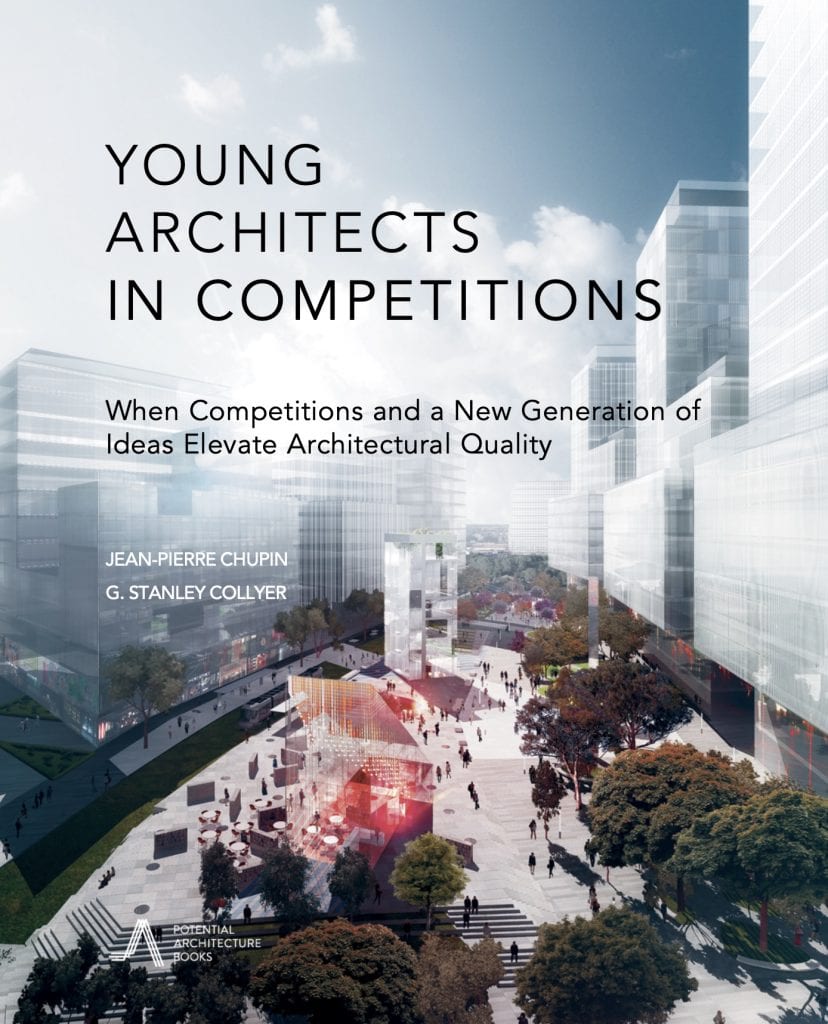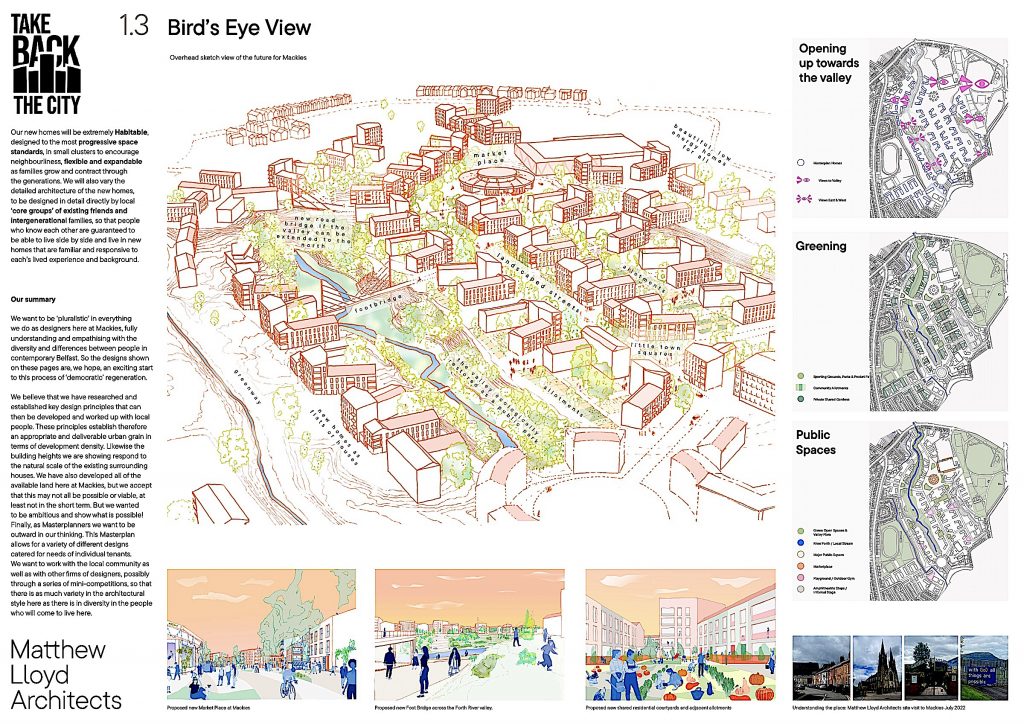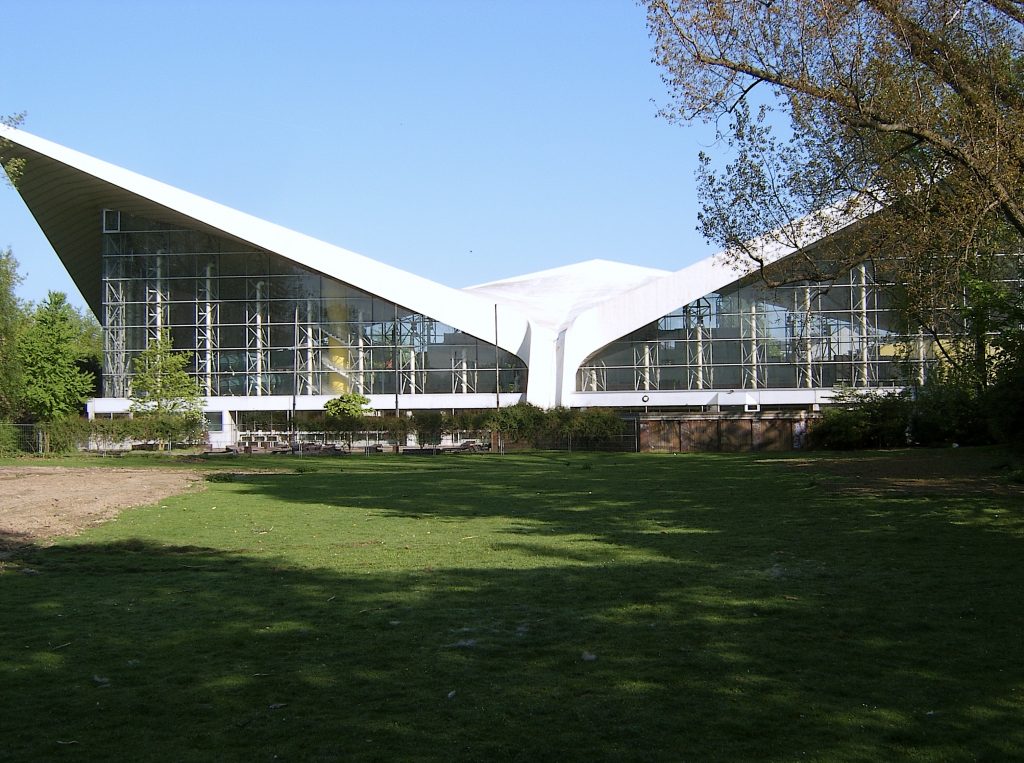Uncovering Hidden Possibilities: Lexington’s Town Branch Competition
Uncovering Hidden Possibilities
Lexington’s Town Branch Competition
by Stanley Collyer

Lexington, Kentucky is known primarily for two things, its horse industry and university basketball team. The former has had a positive effect on the city’s urban fabric in that horse farms surrounding the city have declined to sell off their property to developers, with the result that the city’s urban core is more compact and without that ubiquitous doughnut hole that surrounds the downtowns of so many Midwestern cities. As for the basketball team’s Rupp Arena, adjacent to the convention center, this has been a focal point of downtown development for decades, surrounded by hotels, restaurants and commercial structures.
A Significant Addition to a Public Place: The Cadogan Café Competition, London
A Significant Addition to a Public Place
The Cadogan Café Competition, London
by Stanley Collyer
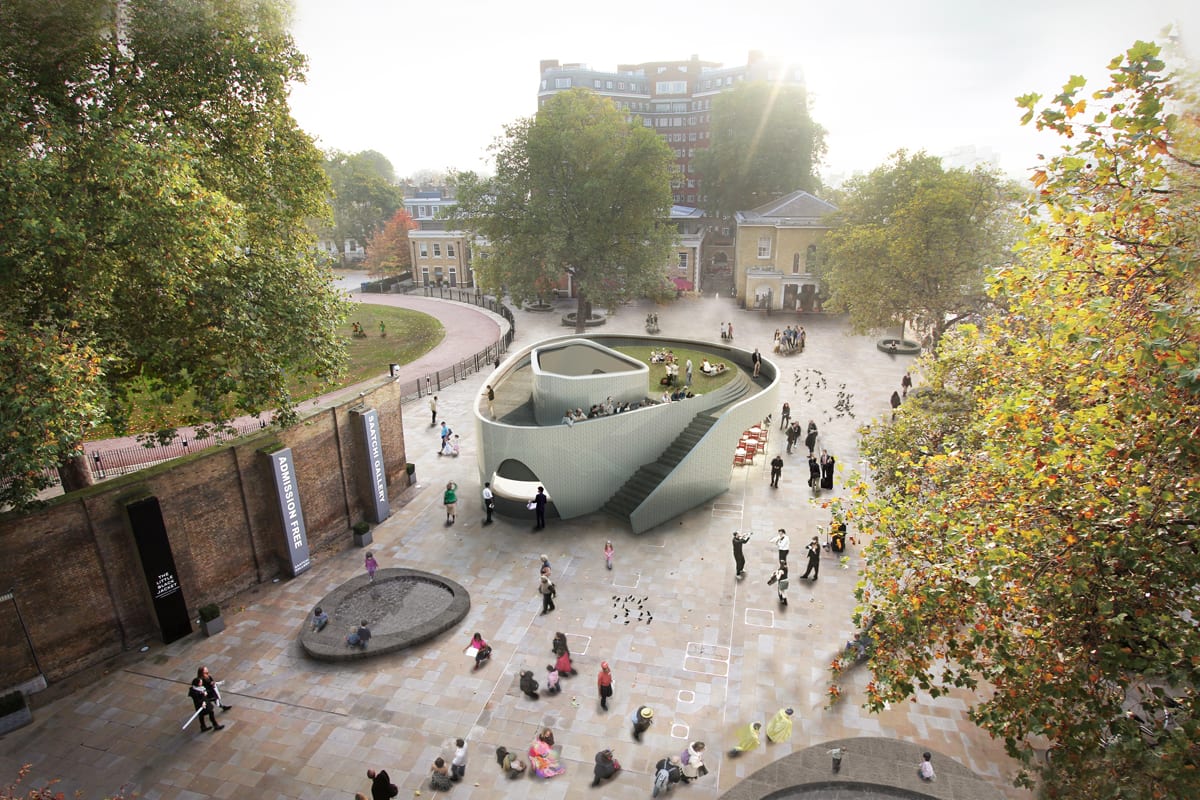
This place is missing something—probably a subliminal thought of many Londoners who frequented the Duke of York Square area in London, near the entrance to the Saatchi Gallery in Chelsea. The locals also decided the site needed a visual lift—but what kind? Settling on a café as the answer would always seems to meet at least one requirement: You can pick up a coffee on the way to work, or it can serve as a casual meeting place. In any case, it is not to be ignored.
Urban Design in a Remote Village: The Klaksvik Town Center Competition
Urban Design in a Remote Village:
The Klaksvik Town Center Competition
by Stanley Collyer
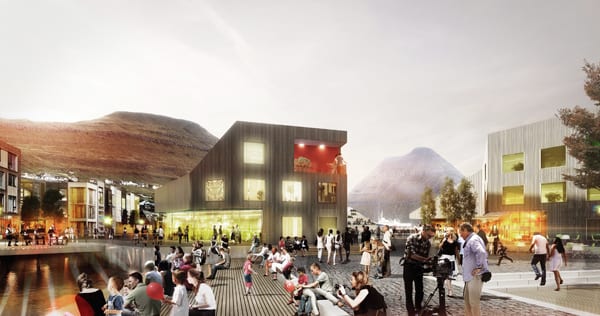
The Klaksvik Town Center competition revealed that even a fishing village in a remote north Atlantic island group can attract the notice of the global architectural community. Located on one of the Faroe group islands in the north Atlantic between Iceland and Norway, Klaksvik was a relatively isolated fishing village until the recent construction of a road linked it to the rest of the island. Before that, all commercial communication with the rest of the archipelago had to take place by boat.
Klaksvik has been dependent on fishing for centuries; but as recent economic uncertainties in the fishing industry have battered the local economy, the municipality is looking elsewhere for economic stability—such as technology. However, in order to stem the brain drain to the European mainland of their younger citizens, the city decided that an upgrade of the town center could be part of the answer. In this way, they could at least visually keep in step with their European neighbors. To increase its public visibility and lend the town a more urban character, the city fathers decided to stage an international competition on the Scandinavian model—the islands are linked politically to Denmark—for modernization of the town’s center.
Ideas for Rebuilding East Manhattan’s Edge on the Water
Ideas for Rebuilding East Manhattan's Edge on the Water
by Stanley Collyer
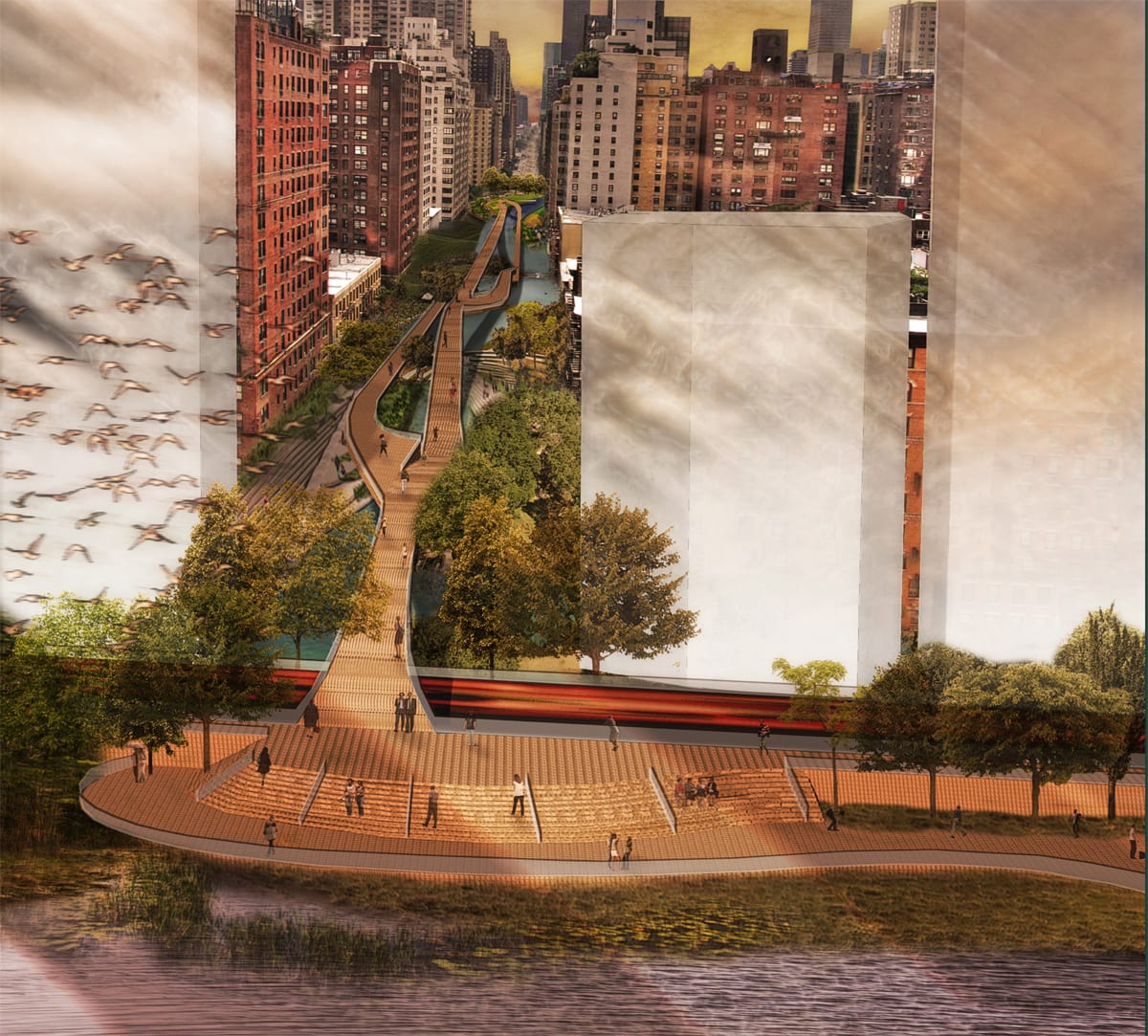
Civitas, a New York-based non-profit has focused its programs on the Manhattan side of the East River waterfront. One of its more recent ventures was a design-ideas competition, Reimagining the Waterfront, the overriding idea being to improve the East River Esplanade between East 60th and 125th Streets.
A New Icon for Keelung’s Waterfront: Whether Arriving, Departing, or Just Looking
A New Icon for Keelung's Waterfront:
Whether Arriving, Departing, or Just Looking
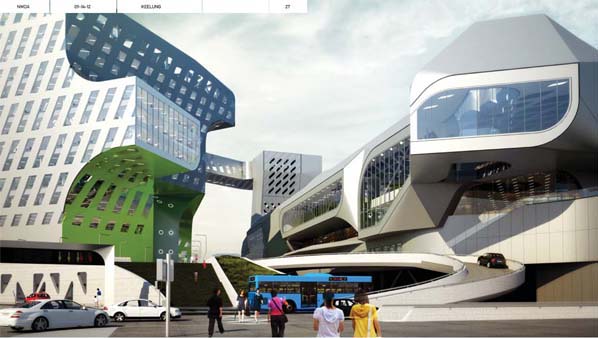
In anticipation of making Taiwan into the marine shipping hub for the Asia Pacific region, the Taiwan International Ports Corporation (TIPC) is investing about NT66 billion over the next five years toward the redevelopment of the port cities of Koashiung and Keelung. To facilitate the design selection process for new terminals in these ports, two competitions have been staged at both locations. In the Koashiung competition, held in 2010, two New York-based firms won the top spots—RUR architecture winning and Asymptote coming in second. In Keelung, it was a repeat performance if you will for Asymptote, which this time around placed second to the winner, Neil M. Denari Architects (NMDA) of Los Angeles. For some of the jurors that presided over the latter competition, it turned out to be a close decision, coming down to two schemes, Denari’s and Asymptote’s.
Looking for an Iconic Answer: The Oceanside High School Performing Arts Center
Looking for an Iconic Answer:
The Oceanside High School Performing Arts Center

Oceanside High School has a location that many other big public campuses may envy. The 2,500-student school is an easy walk to some of California's most beautiful beaches and also is close to the big open spaces of the U.S. Marines' Camp Pendleton base along the Pacific coast. What's more, the campus is just to the west of the Interstate 5, the main freeway route that puts downtown San Diego only about 40 minutes away.
Designing a Museum Addition: No Easy Task in Quebec
No Easy Task in Québec
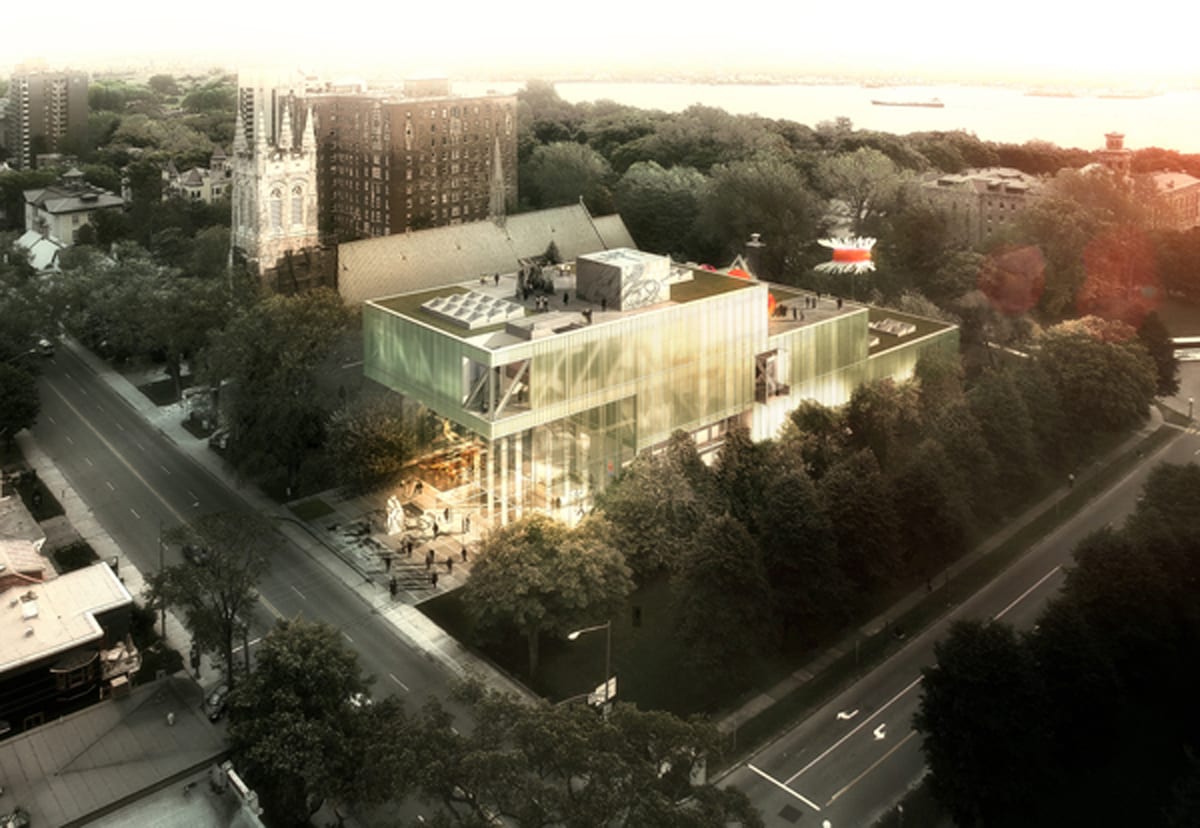
All photos courtesy of Catalogue des Concours Canadiens, L.E.A.P., Université de Montréal
The Office for Metropolitan Architecture (OMA) made architectural history in 2010 by winning an open international competition for a new museum—in a place where international architects hadn’t won one for over fifty years. What’s more, they won in a city that’s been on the UNESCO World Heritage list since 1985. This aggressiveness in foreign markets is business-as-usual for the world’s top firms. But surprisingly, the competition wasn’t in China or Russia or India or Brazil, but rather Canada. OMA won the international competition for an addition to the Musée national des beaux-arts du Québec (MNBAQ) in Québec City.
Low-Tech Solutions for Developing Countries: The Moving School Project in Burma
The Moving School Project in Burma
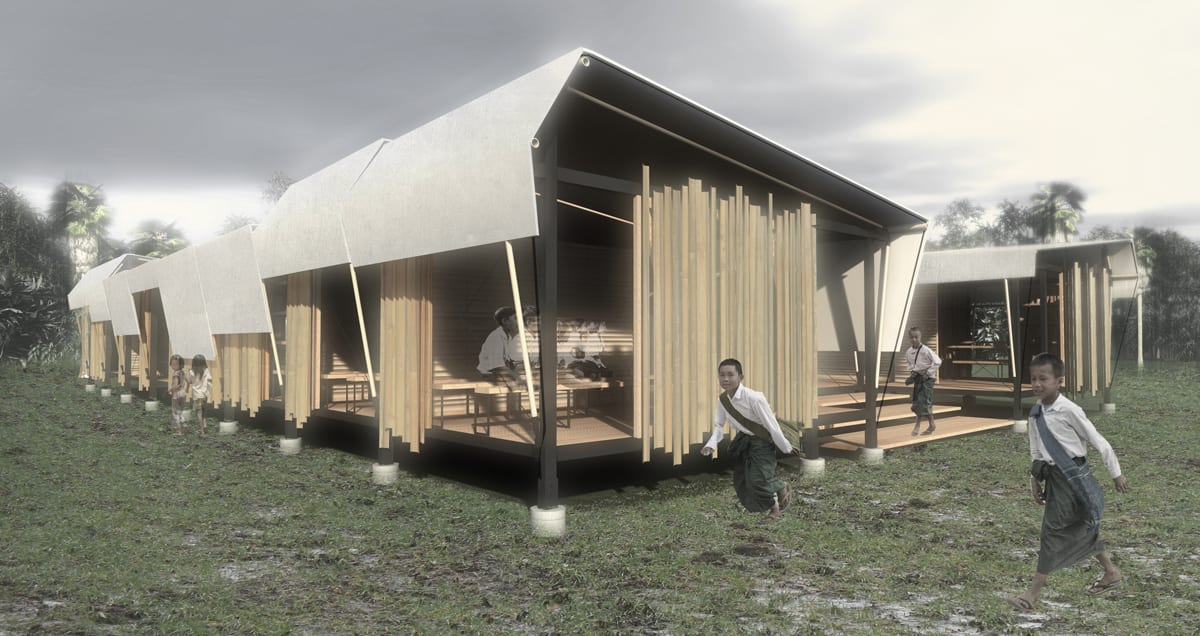
Children are often the ones suffering most when they become refugees. Not only do they undergo the physical deprivations common to many of the most serious scenarios affecting refugees, they often miss out on the intellectual stimulation provided in their previous educational environment. Because of the relatively recent flow of those Burmese refugees over the Thai border fleeing persecution in their native Burma, the situation of the children has become increasingly precarious. After visiting the Mae Sot refugee camp on the Tai/Burmese border, Louise McKillop and David Cole of the U.K. non-profit, Building Trust International, decided to make an attempt to rectify this, even though if only on a modest scale: they decided to stage a competition for the design of a low-tech, sustainable school module that could be easily dismantled and moved back to Burma when conditions dictated it was safe to do so.
Low-tech as High Value: De-Materializing Seattle Center
De-Materializing Seattle Center: The Triumph of the Idea
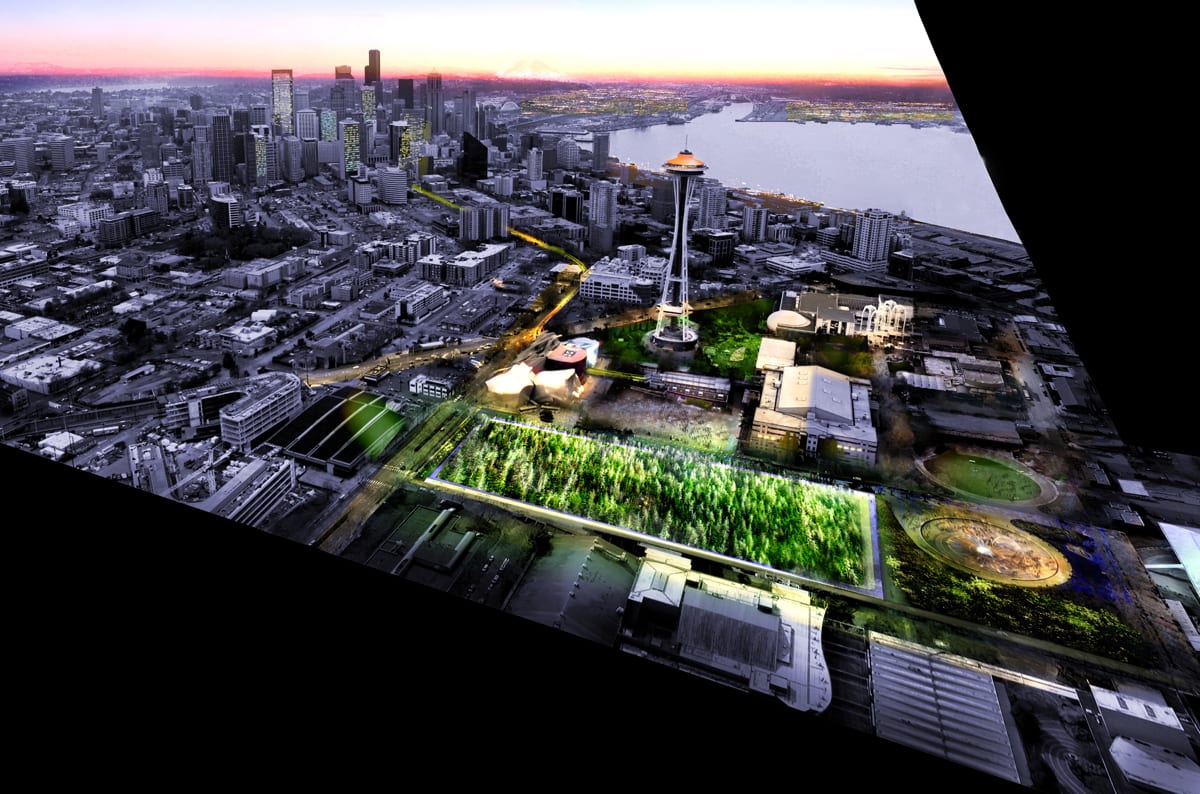
The most ambitious urban plans often don’t materialize beyond the drawing board. Usually, it’s a funding issue, or local politics, or simply the lack of will on the part of those who are calling the shots to take up a brand new idea. Seattle, no stranger to grand urban schemes, seems to be one of those rare exceptions—the sweeping Olympic Sculpture Park by Weiss/Manfredi being a recent example. A new plan by Field Operations (James Corner) for the Seattle waterfront could well turn out to be a worthy addition. So staging an ideas competition for an underused site near Seattle’s urban core—Seattle Center—would seem like an attention-getter and harbinger of great things. As was the case with this competition, initiating a discussion about a site without imposing strict programmatic limitations can sometimes get the ball rolling. Wasn’t this how New York’s High Line got started, first raising the bar with an ideas competition until it developed into a real project?
A New Babylon: The Singapore Gardens by the Bay
A New Babylon
The Singapore Gardens by the Bay
by Stanley Collyer
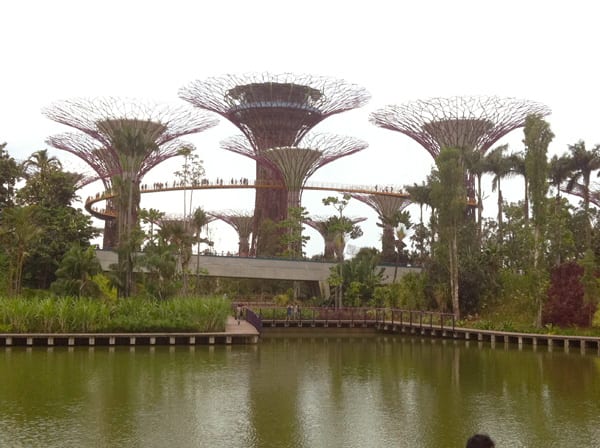
In 2006, Singapore staged a competition for a new park on the bay spanning 250 acres. At the edge of the city’s downtown, it was intended to become Singapore’s premier urban outdoor recreation space and a national icon. In essence, what the client was looking for was a botanical garden with an element of adventure added to the mix.





























